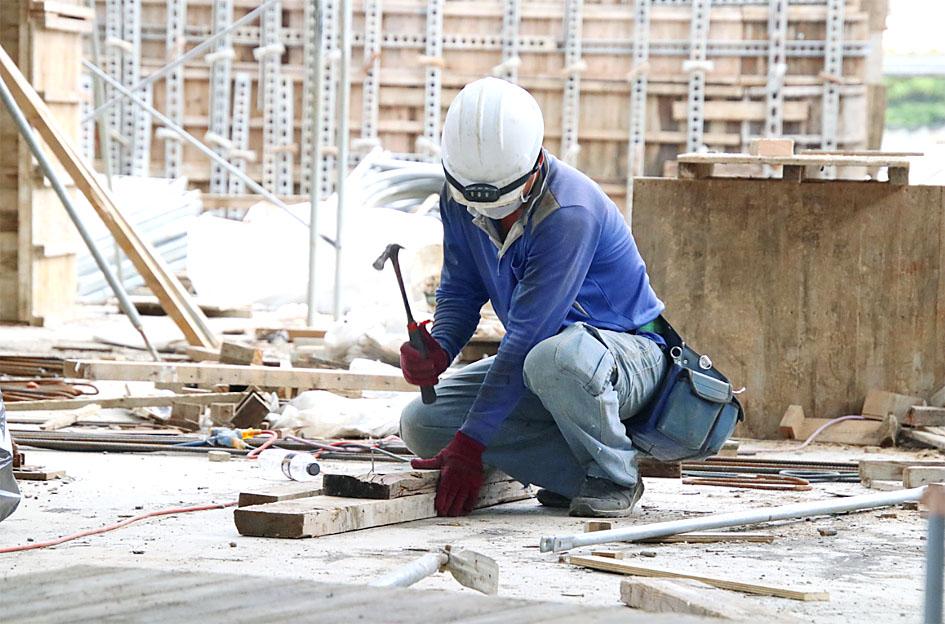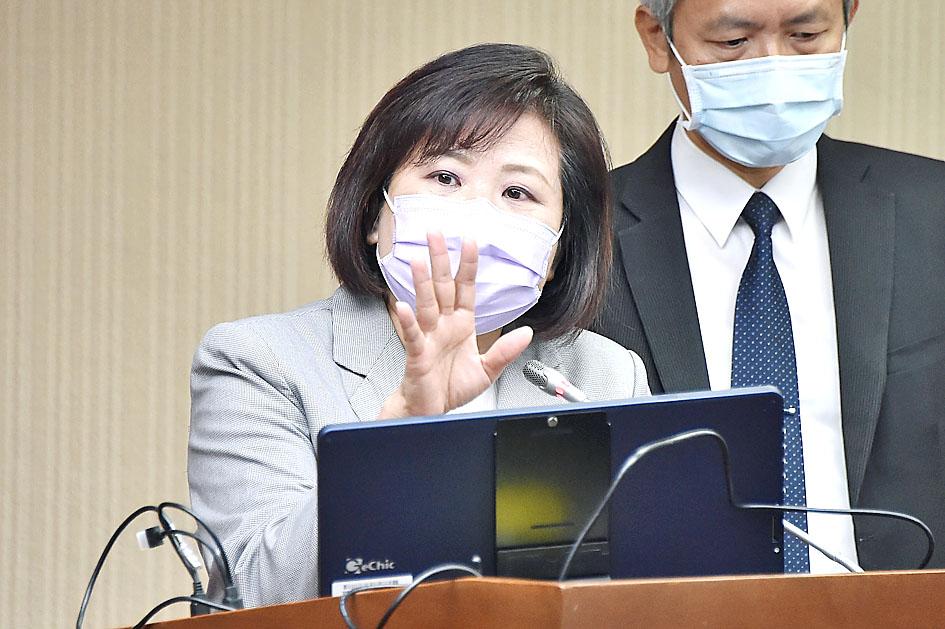Most companies frown on the government’s suggestion that wages be increased next year, while only 93 percent could tolerate a 3 percent increase, as soaring materials and labor costs squeeze their profit margins, a survey released yesterday by the Chinese National Federation of Industries (CNFI, 全國工業總會) found.
The plea came one day before the Ministry of Labor is to discuss the matter, after floating an increase of at least 3 percent.
The Taipei-based trade group pressed the government to take a cautious approach, as a big majority of its member companies are seeing revenue and profit decline, even though Taiwan’s GDP growth is expected to hit 6 percent this year.

Photo: CNA
“A majority of the surveyed companies disagree with the proposed wage hike because only 17.5 percent of them have seen a pickup in sales and earnings, and would not be affected,” said the group, which consists of 159 associations and represents a majority of local manufacturers.
Local electronics suppliers have reaped a windfall from a surge in demand for devices used in distance learning and remote working during the COVID-19 pandemic, which has restricted business in most other sectors, the survey showed.
Small and medium-sized enterprises have especially felt the pinch of spiking raw materials and labor costs as they have difficulty passing on extra costs to their customers, the group said.

Photo: Tu Chien-jung, Taipei Times
About 50 percent of manufacturers said that their revenue declined in the first three quarters of this year, while nearly 60 percent saw profitability weaken, it added.
Makers of textile products have fared worse, as 69 percent reported topline shrinkage and 78 percent experienced a decrease in their bottom line, it said.
Yesterday, Minister of Labor Hsu Ming-chun (許銘春) told a meeting of the legislature’s Social Welfare and Environmental Hygiene Committee that she is confident a wage hike of at least 3 percent can be enacted next year given the nation’s vibrant economy.
However, Hsu stressed that the extent of the increase would not be determined until the ministry’s Minimum Wage Review Committee convenes today.
The current minimum monthly wage is NT$24,000, while the minimum hourly wage is NT$160.
If the minimum wage hike is confirmed, the government would focus on proving subsides to companies that have been financially affected by the COVID-19 crisis, Hsu said, declining to give further details.
She ruled out the possibility of only increasing the minimum wage in certain industries, saying that once the review committee reaches a decision and it is approved by the Cabinet, the policy would be rolled out in all sectors.
However, the CNFI survey showed that if the government insists on a pay hike, 93 percent of the polled companies said that they could only accept an increase of up to 3 percent, adding that a larger increase would hurt their operations.
The change would raise the minimum monthly wage to NT$24,720 and the minimum hourly wage to NT$164.8, the group said.
The government must not tackle the issue by generalizing that all companies are enjoying as strong earnings growth as local high-tech firms, the group added.
Local semiconductor firms lead their sector in the global market and make a significant contribution to the nation’s GDP growth, the group said.
Service-oriented sectors, on the other hand, have taken a hard hit from the COVID-19 situation over the past two years without a cure in sight yet, it said.
Additional reporting by CNA

SECURITY: As China is ‘reshaping’ Hong Kong’s population, Taiwan must raise the eligibility threshold for applications from Hong Kongers, Chiu Chui-cheng said When Hong Kong and Macau citizens apply for residency in Taiwan, it would be under a new category that includes a “national security observation period,” Mainland Affairs Council (MAC) Minister Chiu Chui-cheng (邱垂正) said yesterday. President William Lai (賴清德) on March 13 announced 17 strategies to counter China’s aggression toward Taiwan, including incorporating national security considerations into the review process for residency applications from Hong Kong and Macau citizens. The situation in Hong Kong is constantly changing, Chiu said to media yesterday on the sidelines of the Taipei Technology Run hosted by the Taipei Neihu Technology Park Development Association. With

CARROT AND STICK: While unrelenting in its military threats, China attracted nearly 40,000 Taiwanese to over 400 business events last year Nearly 40,000 Taiwanese last year joined industry events in China, such as conferences and trade fairs, supported by the Chinese government, a study showed yesterday, as Beijing ramps up a charm offensive toward Taipei alongside military pressure. China has long taken a carrot-and-stick approach to Taiwan, threatening it with the prospect of military action while reaching out to those it believes are amenable to Beijing’s point of view. Taiwanese security officials are wary of what they see as Beijing’s influence campaigns to sway public opinion after Taipei and Beijing gradually resumed travel links halted by the COVID-19 pandemic, but the scale of

A US Marine Corps regiment equipped with Naval Strike Missiles (NSM) is set to participate in the upcoming Balikatan 25 exercise in the Luzon Strait, marking the system’s first-ever deployment in the Philippines. US and Philippine officials have separately confirmed that the Navy Marine Expeditionary Ship Interdiction System (NMESIS) — the mobile launch platform for the Naval Strike Missile — would take part in the joint exercise. The missiles are being deployed to “a strategic first island chain chokepoint” in the waters between Taiwan proper and the Philippines, US-based Naval News reported. “The Luzon Strait and Bashi Channel represent a critical access

Pope Francis is be laid to rest on Saturday after lying in state for three days in St Peter’s Basilica, where the faithful are expected to flock to pay their respects to history’s first Latin American pontiff. The cardinals met yesterday in the Vatican’s synod hall to chart the next steps before a conclave begins to choose Francis’ successor, as condolences poured in from around the world. According to current norms, the conclave must begin between May 5 and 10. The cardinals set the funeral for Saturday at 10am in St Peter’s Square, to be celebrated by the dean of the College